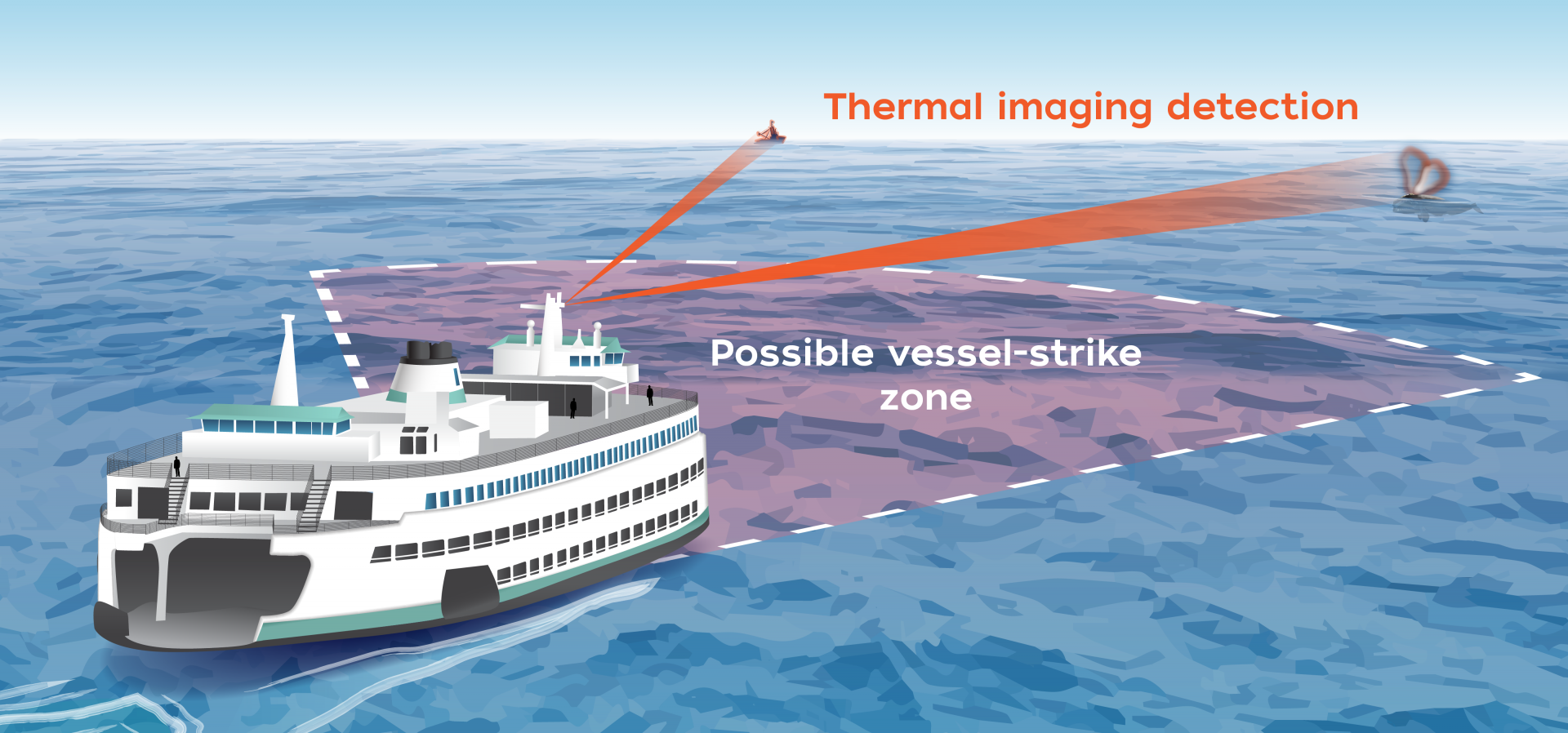Smart cameras keep lookout for endangered whales
Ship-mounted camera system provides real-time detection and increased response time, which could reduce the number of whales killed by vessel strikes
By Elise Hugus | December 17, 2020
With numbers hovering around 360 individuals, the North Atlantic right whale is critically endangered. Entanglement in fishing gear is the greatest threat to their survival, but vessel strikes pose another danger. Restrictions on shipping speeds and routes have reduced the number of vessel strikes since 2006, but according to the U.S. National Marine Fisheries Service, at least 16 North Atlantic right whales were killed by ships between 2003 and 2018.
Authorities in the U.S. and Canada use spotter planes to search for North Atlantic right whales so they can issue warnings to nearby ships. But planes can’t be used at night or in bad weather, nor can observers detect whales swimming in deep water. Passive acoustics on gliders and moored buoys can detect marine mammals 24/7, in near real-time. But these technologies have a two-hour delay between detection and sending an alert to regulators that might trigger a warning to vessels at sea.
To help reduce that response time, WHOI assistant scientist Dan Zitterbart— with fellow engineers Alessandro Bocconcelli, Daniel Gomez-Ibañez, Bob Petitt and Fred Thwaites— is developing a whale detection system specifically designed for vessel-strike mitigation that uses thermal infrared (IR) cameras to monitor for whales.
“Our concept is very simple,” Zitterbart says. “We have a thermal imaging scanner that scans the surface for whale exhalations, or blows. If a whale surfaces and blows, its thermal signature can be recorded by the camera.”
The next part is not as simple. The cameras are linked to artificial intelligence that Zitterbart's team has trained on examples of waves, birds, vessels and whales. These algorithms aim to filter out thermal signatures of boats, bird and waves to only send out alerts of probable whale detections. If the cameras are mounted high enough— such as on wind farm turbines or coastal mountains— they’re able to detect whales up to ten kilometers away. In partnership with British Columbia Ferry Services, Inc. and supported by the Department of Fisheries and Oceans Canada, Zitterbart installed a land-based thermal imaging camera system near a busy shipping channel in British Columbia to monitor for Southern Resident Killer Whales.
Mounted on ships, the system can alert captains to the presence of whales several kilometers away within seconds, enough time for most vessels to slow down or change course. Unlike human observation from planes and boats, these cameras don’t require ambient light, so they can spot whales around the clock.
Zitterbart, who received a 2019 Young Investigator Program award from the Office of Naval Research for his work on whale detection, first developed a thermal imaging system to protect marine mammals from underwater noise during scientific seismic surveys. But there were drawbacks to this design, Zitterbart said. The cameras provided a 360-degree view, making the system prohibitively expensive. By narrowing the field of view and installing miniature cameras and stabilizers, Zitterbart reduced the cost and the weight of the system enough to install on small vessels.
In the summer of 2020, Zitterbart and colleagues from Stellwagen National Marine Sanctuary used this lighter, stabilized prototype to detect humpback whales from a research vessel off the coast of Massachusetts. In 2021, the researchers plan to continue these trials and also install the system on a passenger ferry in the North Atlantic to evaluate unattended performance of the system. Zitterbart is working on a second verification step to further reduce false positives.
“Thermal imaging systems are a powerful new tool in real-time whale detection,” says Zitterbart. “Used alone or in conjunction with acoustic monitoring, this technology could significantly reduce the risk of vessel strikes.”


